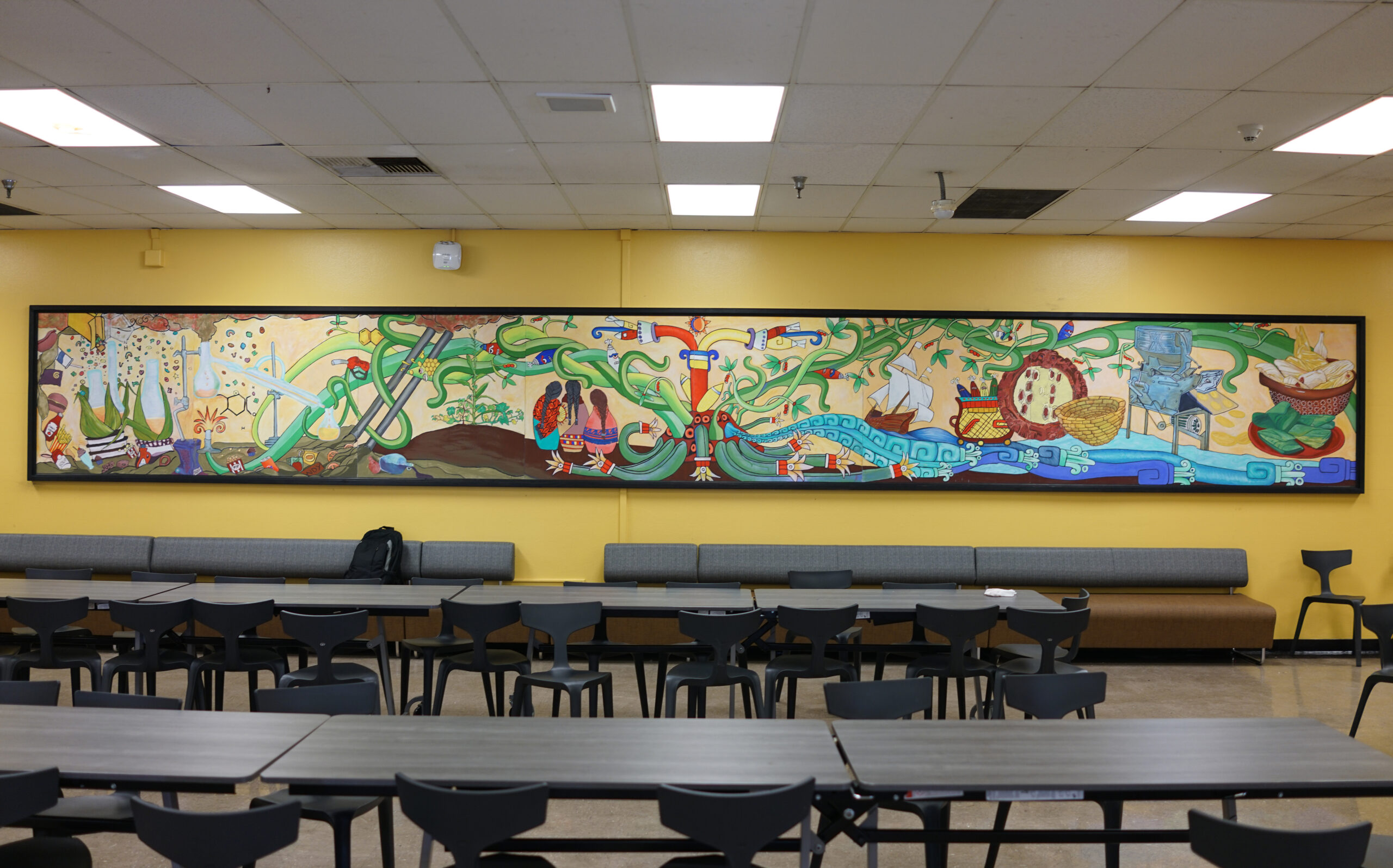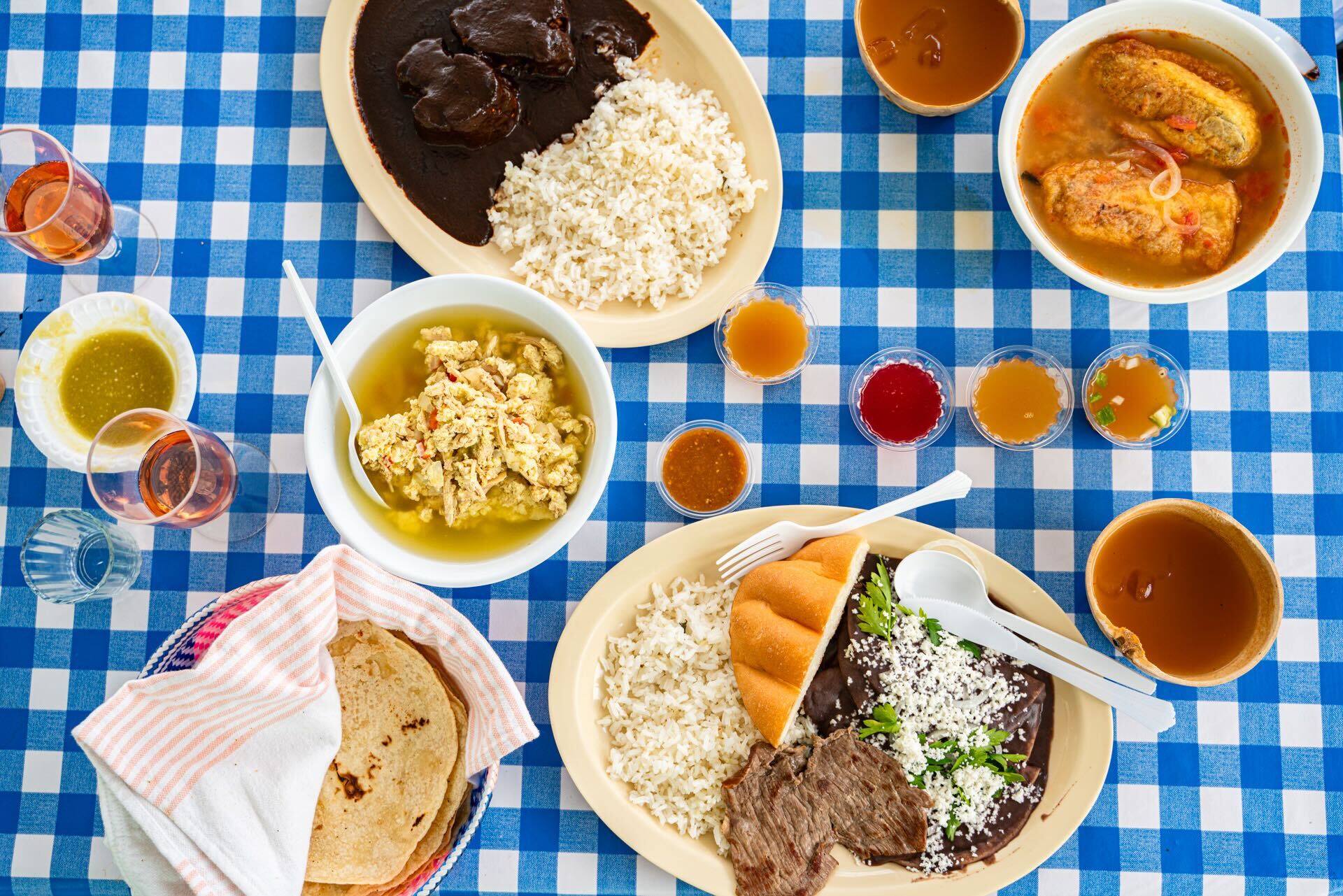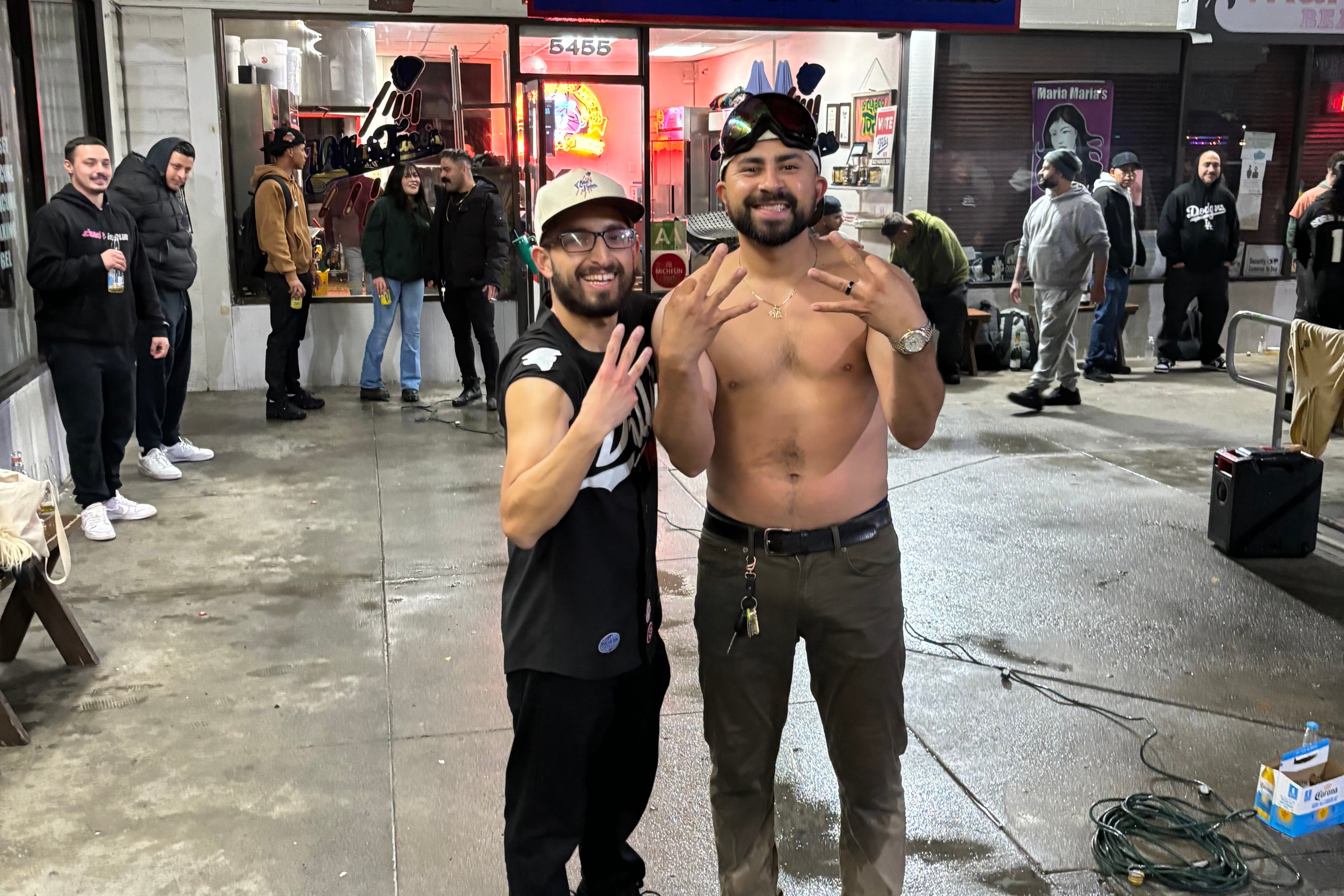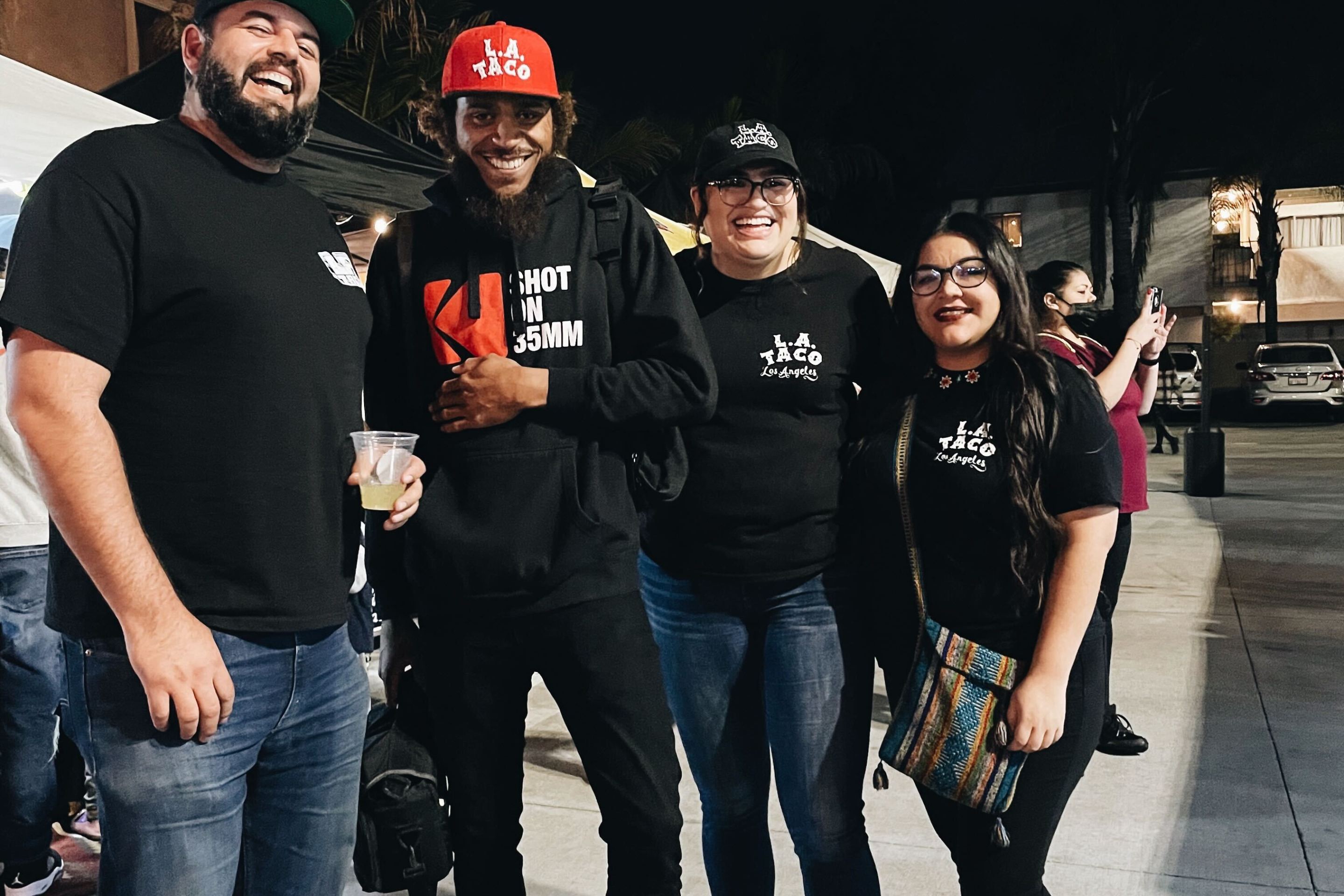By George B. Sánchez-Tello
In spring 2022, the principal of Roosevelt High School in Los Angeles’ Boyle Heights neighborhood approached Chicano artist Omar G. Ramírez to create a mural on campus. Ramírez knew this was the chance he was waiting for and responded with an ambitious, multidisciplinary art project meant to get young people to think critically about their food. Having grown up on Los Angeles’ Eastside, the artist had witnessed the impact of processed food on community health: Among low income California Latinos, those who are food insecure are more likely to develop type 2 diabetes compared to those able to afford healthier food. This has been called food apartheid.
“I had a student who didn’t know tortillas were made from corn,” said Ramírez, a master artist who works for the Mexican American Legal Defense and Education Fund.
Some 41% of Latino adults in California are unable to afford enough food, according to the UCLA California Health Interview Survey. Limited income creates limited food choices, leading to a reliance on cheap, processed, sugar-rich foods as well as a disconnect from traditional and healthier foodways.
“We lost our knowledge of why we eat certain foods,” Ramírez said. “This is the living experience and tangential effect of colonization. In many ways, this is colonization’s continued practice.”
A return to traditional diets and foods, including corn tortillas, beans, eggs, and tomatoes, has been shown to counter the harm of processed foods. Demonstrating this through art and articulating it through young peoples’ voices are more effective than simply telling kids to eat better foods. The mural exists at the intersection of food and restorative justice and ethnic studies, said Ramírez.
“This project, it’s all part of the restorative justice process. It’s an offering of art through that lens,” Ramírez explained.
Roosevelt High School is undergoing a modernization process corrective of its past. Currently home to 1,600 students, almost all of whom are Latino, Roosevelt was once considered the nation’s largest high school with more than 5,000 students at its peak in 2007. One of the sites of the 1968 Chicano Blowouts, part of the broader Civil rights movement, the school was also notorious for its dropout rate — a staggering 45% at the time of the blowouts. Nearly all of the high school’s students—96.6%—qualify for free or reduced-price meals. When students line up inside the cafeteria, they have a direct view of the mural.
Bright, mineral-based hues of blue, beige, green and brown incorporate ancient motifs and modern images. The mural, more than 30 feet long, depicts the history of elotl, Nahuatl for corn, in the Americas, across the globe, and here in one of Southern California’s Chicano hubs. The artwork and its themes were inspired by the disconnect between the student body and their ancestral foodways.
To read the mural properly, you start from the center, Ramírez said.
At the heart of the mural is a turtle shell from which grows corn and creates a milpa, or farm field. To the left are squash, corn and beans as well as three women. The women are symbolic of the symbiotic relationship of the three vegetables, often referred to as the three sisters, or las tres hermanas. Kneeling with her back to the viewer, each wears blankets and hair differently to reflect different regions of the Americas.
The helix of ethanol and high fructose corn syrup emerges, alongside the dollar symbol, leading to a waste land of processed, packaged and lab-grown foods.
“The students wanted to talk about the misuse and the abuse of corn,” Ramírez said.
Reading from center to right, there is the Mexica symbol of water. A boat represents the Columbian Exchange, or the exchange of goods, culture, slaves and communicable diseases between the Eastern and Western hemispheres amidst colonization. Africa is represented by the Ifa plate, used in divination practices of the Yoruba people. Towards the edge of the mural, an industrial tortilla press is prominent, as is a basket of corn husk-wrapped tamales. Closer inspection reveals Zapatista inspired imagery, such as eyes peering out of balaclava-like corn husks. The mural encourages further discussion, which indeed began among the student body.
“We talk about changing our dietary habits and don’t want food that makes us slow or don’t feel well,” explained Chicuei Ehecatl, 16, a sophomore at Roosevelt who participated in painting the mural.
The project began in Summer 2022 with social work students from California State University, Los Angeles, interning at the Boyle Heights Arts Conservatory. Together, they assisted Ramírez in compiling reading material for a binder given to Roosevelt students on the history of elotl. Ramírez often borrows a phrase from historian Roxanne Dunbar-Ortiz to describe the work: “Follow the corn.”
Next, a trio of community activists and organizers were invited to speak at Roosevelt. Students from the school’s Restorative Justice track and Ethnic Studies program were invited to meet with the guests. Of the 30 students who participated, about half were offered paid internships with the Boyle Heights Arts Conservatory to participate in painting the mural.
As Ramírez and the students planned the mural, they identified a pair of themes: corn practices as ancestral knowledge and the abuse of that knowledge for money.
“In the meetings, it was crazy to see what people didn’t know,” recalls Ehecatl. “From where the food comes from to how it gets on the table; the disconnect was remarkable.”
As the mural came together, Roosevelt students took notice and, more importantly, started asking questions. Ehecatl said that not only does he get props and recognition from other students for his role with the mural, but classmates have asked him to explain its symbolism.
“I think it will ignite a domino effect of realization and thinking critically about what they put in their bodies,” Ehecatl said.
Ehecatl appreciated the opportunity to work with different people as well as learn new techniques in art making.
The mural was also an opportunity to remind students of the social aspects of food.
“Students understood food in name and eating, but not food as a cultural practice,” explained Ramírez. “Some didn’t know what a tamalada is; or how to make nixtamal. We had to reintroduce corn.”
The elotl mural was hung in January. A school ceremony is planned for the end of March in which a plaque will be placed near the mural; in addition, the students who participated in the project will be recognized and acknowledged.
Nicolette Morales, a restorative justice teacher at Roosevelt, said the project is an accomplishment on multiple levels. The project demonstrates the ability of a public school to work with community partners and fully realize the benefit of participatory art. The work displays wisdom from nontraditional voices in a school setting. The mural also creates a sense of authorship, accomplishment, and voice for students from disinvested and marginalized communities.
“I think it began more open conversations about food, as well as themselves; their journey to understanding identity, ancestry, and their voices,” Morales said. “We have a beautiful piece of art that enhances the air and was created collectively by youth walking these halls. That’s dope.”
This article was produced by Capital & Main, which is an award-winning publication that reports from California on economic, political, and social issues. L.A. Taco is co-publishing this article.





